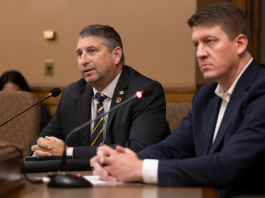The Wisconsin Institute for Law and Liberty looked at the data included in the coronavirus report issued by the state’s Department of Public Instruction last month.
(The Center Square) – Wisconsin schools saved about $40 million by not being open last spring, but a new report says no one is sure where the money went.
Flanders said schools across the state saved another $10.6 million in personnel costs, presumably from not needing as many substitute teachers.
“The report asks for costs and savings in five categories: utilities, transportation, food service, personnel, contract terminations, and a catch-all ‘other’ bucket,” WILL Director of Research Will Flanders wrote. “By far the biggest savings came from transportation costs. When schools are shut down, obviously most kids are no longer being transported, leading to a savings statewide of more than $34 million.”
“The only main bucket for which we see a cost increase is for food services, which increased by approximately $6.3 million,” Flanders added. “This likely results from the logistical challenges of continuing to provide free and reduced meals during the pandemic.”
The DPI report shows Wisconsin schools spent more on food service during last spring’s shutdowns.
The WILL study lists the biggest savers, and biggest losers from last spring’s shutdown.
Many schools across the state, mainly in bigger cities, turned their focus last spring almost entirely toward providing breakfasts and lunches for students.
Racine schools spent the most during last spring’s shutdown. Flanders noted Racine increased spending by $1.9 million. They were followed by Madison, New Berlin, North Fond du Lac, and Green Bay schools.
Wausau schools saved more than $3 million, followed by Kenosha, Milwaukee, Fond du Lac, and Eau Claire schools.
“Given that other districts were able to get out of at least a portion of their transportation spending, this suggests either that bad contracts were made by the district, or that they are not fully reporting the money they saved,” Flanders wrote.
Flanders said districts that lost money owe taxpayers an explanation.
“Many districts throughout the state have continued to keep their doors shut, despite substantial scientific evidence that it is safe to reopen,” Flanders said in his study’s conclusion. “The data here shows clearly that districts enjoy significant financial savings from keeping their doors shut. This represents the hard-earned money of Wisconsin taxpayers, and ought to be used to educate Wisconsin’s children. These savings ought to be passed on to Wisconsin parents who are struggling to educate their children in districts more concerned about the interests of the teachers union than about educating kids.”
He also says schools that saved money owe an explanation to taxpayers.
{facebook_url}
By Benjamin Yount | The Center Square
Go to Source
Reposted with permission











